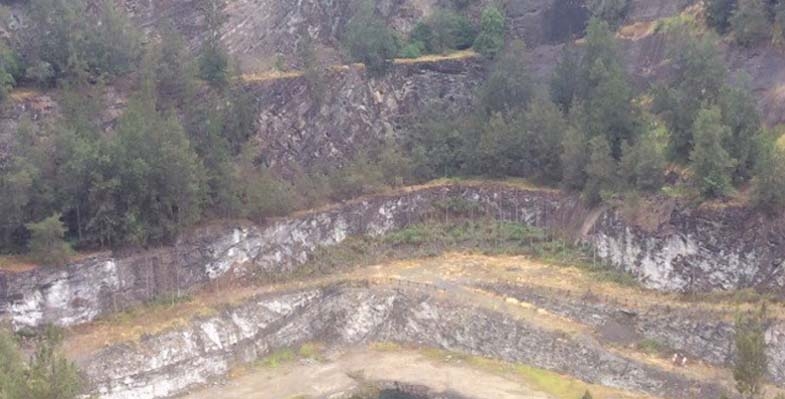In a modern world where dramatic images of volcanoes and other natural phenomena from remote corners of the globe are just a mouse-click or screen-touch away, to have on our local doorstep the best real-life example of an exposed volcanic neck in Australia is not to be lightly brushed aside.
In the proposed new park complex, STEP would like to have a viewing platform for the general public and for students, with comprehensive information panels on the Hornsby diatreme and diatremes in general. It should also be made possible, with due safety considerations, for guided geoscience student parties and qualified scientists to access and sample the actual faces.
Important facts to consider:
- The diatreme complex of Hornsby and Thornleigh is one of the two largest in the Sydney Basin amongst 95 or so known diatremes (the other large diatreme is Nortons Basin near Wallacia).
- The diatremes are believed to be largely Jurassic in age, a time when the water-saturated sandstones, shales and coal measures of the Sydney Basin were settling and compacting, and magmas came in from beneath and blasted residual water to the surface through powerful, steam-driven vents. Such vents, known as maars, are a worldwide phenomenon but it would be extremely difficult to find a better or more accessible example of one in cross-section than Hornsby's anywhere on the planet.
- The numerous diatremes scattered through the Sydney Basin have had striking effects on topography and vegetation. They carry highly fertile soils and many were cleared for agriculture, but remnant natural vegetation such as Hornsby Valley's blue gum forests are strikingly different to that of surrounding terrain, and almost invariably have led to their classification under threatened ecological community and species acts, both state and federal.
- The igneous event that drove the Hornsby diatreme has provided most of Greater Sydney's road metal aggregate via quarries such as Hornsby and Prospect.

